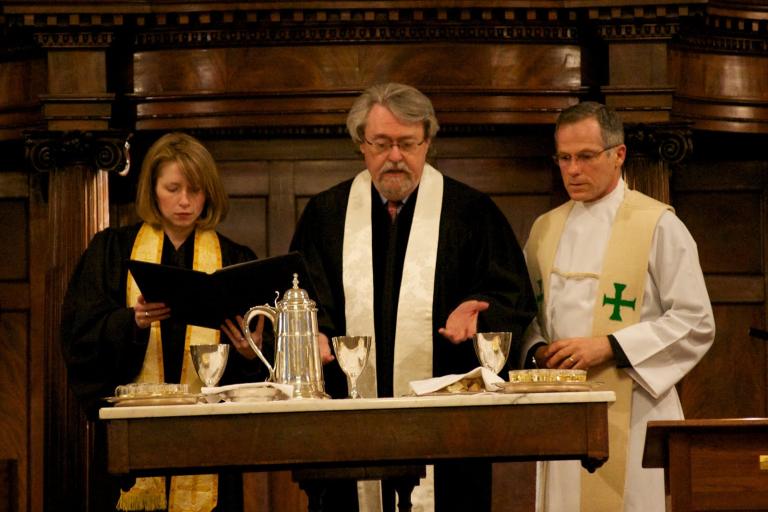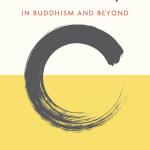A Zen Meditation on Christian Communion
As anyone interested in Christian origins no doubt knows, the informed assumption of the academic community is that between Jesus’ death and the writing of the gospels there appear to have been two traditions passed on, orally for sure, possibly in writing as well.
One was a collection of Jesus’ sayings. The fabulous and never found “Q” document. This is one of the reasons people got so excited when the Nag Hammadi library was uncovered, and they finally had a complete gospel according to Thomas. As it is simply a list of sayings, many very interesting, and some not in the canonical gospels, some thought maybe this was Q. Most agree it is not. Instead a later composition, although nearly all agree there is a core to it that is truly ancient, and maybe authentically an alternative source. But not Q.
What people sometimes miss in the drive to capture the sayings of the good rabbi is that there almost certainly was another collection. Again passed on orally, but possibly in writing as well. And these were accounts of the miracles attributed to Jesus. These were important as part of the proof that Jesus had some sort of divine sanction.
What that divine sanction was would be argued, and heatedly. The arguments continue, although one thread, the group that would coalesce as Nicene Christianity, would become normative.
But for now, the miracles. What captures me is that the four canonical gospels recount miracles. However, a single miracle is recounted in all four of the gospels. Just one recorded by them all. We find it in Matthew 14, Mark 6, Luke 9, and John 6.
In Mark 6: 30-44 which is probably the most primitive of the tellings, with the fewest embellishments we hear:
The apostles returned to Jesus, and told him all that they had done and taught. And he said to them, “Come away by yourselves to a lonely place, and rest a while.” For many were coming and going, and they had no leisure even to eat. And they went away in the boat to a lonely place by themselves. Now many saw them going, and knew them, and they ran there on foot from all the towns, and got there ahead of them. As he went ashore he saw a great throng, and he had compassion on them, because they were like sheep without a shepherd; and he began to teach them many things. And when it grew late, his disciples came to him and said, “This is a lonely place, and the hour is now late; send them away, to go into the country and villages round about and buy themselves something to eat.” But he answered them, “You give them something to eat.” And they said to him, “Shall we go and buy two hundred denarii worth of bread, and give it to them to eat?” And he said to them, “How many loaves have you? Go and see.” And when they had found out, they said, “Five, and two fish.” Then he commanded them all to sit down by companies upon the green grass. So they sat down in groups, by hundreds and by fifties. And taking the five loaves and the two fish he looked up to heaven, and blessed, and broke the loaves, and gave them to the disciples to set before the people; and he divided the two fish among them all. And they all ate and were satisfied. And they took up twelve baskets full of broken pieces and of the fish. And those who ate the loaves were five thousand men.
There are some problems with the text. First, people familiar with the scriptures know there’s an older version of this story. In 2 Kings 4:42-44, the prophet Elisha fed a hundred people with twenty loves. Of course, in the newer telling, Jesus does old Elisha one better. Je feeds five thousand with five loves and a couple of fish. So, it can be seen a couple of ways. One is tying Jesus in as a prophet in the great lineage of Jewish prophets. Or, it can be seen as establishing that Jesus as the greatest of the prophets. And, for some, maybe something more than a prophet.
But, for me, there’s something more important in this particular miracle than establishing Jesus connection with the tradition. It has to do with what the miracle turned on. Feeding people. Food.
Even here, there is a wealth of possible meaning. There’s that popular interpretation of the miracle cut for our secular times, for instance. Jesus’ action inspired the people in the crowd who had food with them to share. And it all becomes a version of the stone soup story. A kind of miracle. And I don’t disdain it.
But, I find something more important yet in the story.
When I was in seminary I was introduced to a book titled God is Rice. It consisted of essays on Christianity and East Asian culture by the theologian Masao Takenaka. It opened a lot of doors for me. Especially as a Zen Buddhist formed by and living within Western culture. But the title alone was provocative.
The principal Christian rituals are baptism and communion. Some count them as the only sacraments. And communion turns on the miracle of finding God in bread and wine. It is a powerful symbol. More so for me, because as a child my first impression there was something messy going on was when my Biblical literalist grandmother told me that when the Bible said Jesus drank wine, it meant he drank grape fruit juice. Confusion. Messiness. Contradictions. Starting with how can bread and wine be Jesus’ body and blood? All the way to, why grape fruit juice?
And what in fact is literal truth?
But all along the way God is bread. God is wine. Food and God. What is the most holy thing to a hungry person? What is literal in that?
And, as Professor Takenaka would say instead of God as the “bread of life,” that God was the “rice of life.”
All of it turning on food. Nourishment. That some get. And that some do not get.
And, that those who do not get it, bread or rice, are being deprived of a natural right. As literal a truth as one can find.
For me a cascade of feelings. A cascade of intimations. About what is sacred. About how it is never about something some place other than this place. About no body other than our bodies. Yours and mine.
If a koan is an assertion about the real bound up together with an intimate invitation, then I find the great Christian koan is the communion. Communion. Eucharist. Mass.
Totally expressed within the rite. Totally expressed in giving a hungry person a sandwich. Totally expressed in asking why people are hungry? Totally expressed in the struggle to make sure no one goes hungry.
Take and eat. This is my body. Take and drink. This is my blood.
Not one, not exactly. But not two, not precisely.
A literal truth. And. The miracle.














